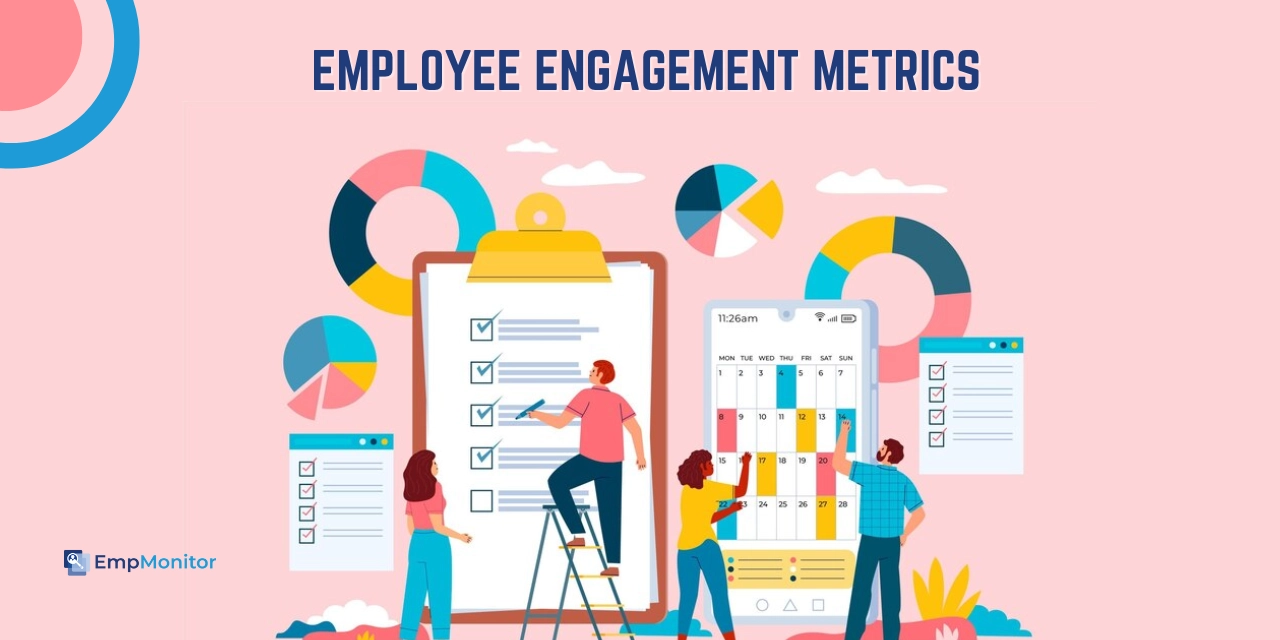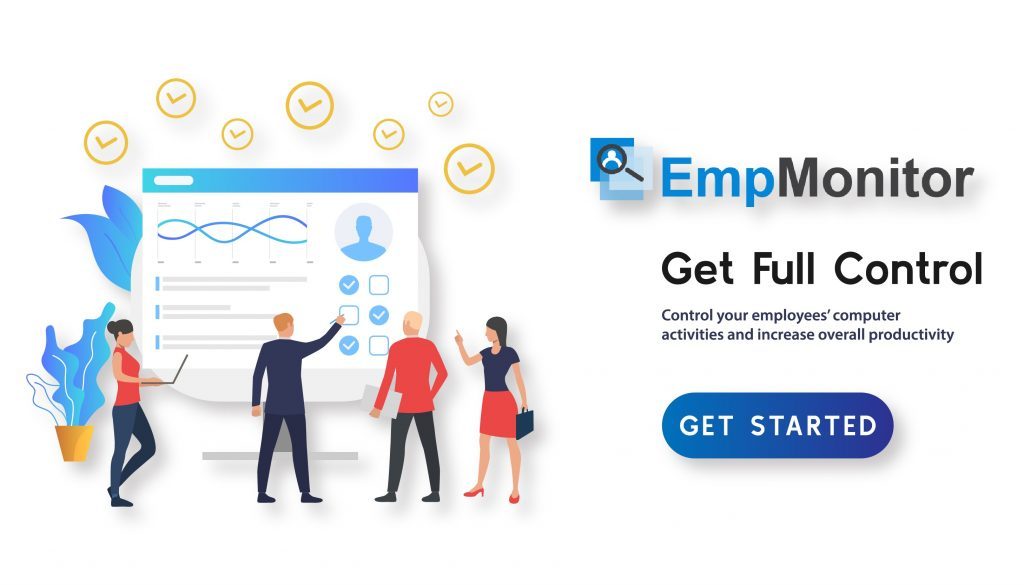Are your employees truly engaged with their work? This question lies at the heart of understanding employee engagement, a crucial aspect of fostering a thriving workplace culture. Nowadays, organizations are increasingly recognizing the significance of employee engagement metrics.
From satisfaction surveys to retention rates, these metrics offer invaluable insights into the overall health of your workforce and its alignment with organizational goals. Let’s unlock the secrets to building a workplace where every employee feels valued, motivated, and empowered to contribute their best.
In this blog, we will discover the metrics to measure employee engagement. From their meaning to how they benefit organizations, we have covered it all for you.
Listen To The Podcast Now!
What Are Employee Engagement Metrics?
Employee or workforce engagement metrics are tools and methods that organizations use. It measures the level of enthusiasm, commitment, and satisfaction among the workforce.
These metrics provide insights into how employees feel about their work. How much they carry the commitment towards their work and the overall satisfaction.
By analyzing these metrics or engagement metrics examples, organizations can look into and identify areas of improvement, address potential issues, and create strategies to boost employee morale and productivity.
Why Should You Track Engagement Metrics?
Measuring employee engagement metrics is not a task. Investing in well-being, productivity, and longevity should be considered a strategic imperative. Here’s why keeping a close eye on these engagement metrics of employee is paramount:
Productivity and Performance
Engaged employees are more likely to be productive and deliver high-quality work. By tracking engagement metrics, you gain insights into the factors that boost performance, allowing you to replicate success across the organization.
Improved Job Satisfaction
Engaged employees are generally more satisfied with their jobs. By measuring engagement metrics, organizations can identify areas where employees may be dissatisfied and implement changes to improve overall job satisfaction.
Enhanced Employee Well-being
Employee engagement metrics generally contribute to well-being. Organizations prioritizing employee engagement see improvements in mental health, job-related stress reduction, and overall well-being among their workforce.
Positive Organizational Culture
Engaged employees contribute to a positive organizational culture. By tracking engagement metrics, organizations can foster an environment that promotes collaboration, innovation, and a sense of belonging.
Better Customer Satisfaction
Engaged employees are more likely to provide excellent customer service. Organizations can use engagement metrics to identify employees who may need additional training or support to enhance the customer experience.
How To Track Employee Engagement?
Measuring employee engagement is a multifaceted process involving various methods to gain comprehensive insights into the workforce’s satisfaction and commitment.
Here are seven effective techniques to track and increase employee engagement metrics.
Surveys and Questionnaires
Obtaining quantitative and qualitative data on employee engagement, regular surveys, and questionnaires are classic methods. These surveys typically cover areas like job satisfaction, work-life balance, communication, and overall job perception. Using standardized questions and scales ensures consistency in responses, making it easier to analyze trends over time.
Performance Reviews and Feedback Sessions
Integrate discussions about engagement into performance reviews and feedback sessions. This method allows for a more personalized approach, where managers and employees can openly discuss engagement-related factors. It encourages a two-way communication channel, fostering a deeper understanding of individual needs and concerns.
Employee Net Promoter Score (NPS)
Adapted from the Net Promoter Score used in customer satisfaction surveys, eNPS measures employees’ willingness to recommend their workplace to others. Based on their responses, employees are classified into three categories: promoters, passives, or detractors. A high NPS indicates a positive work environment, while a low score may signal potential issues.
Social Media and Communication Platforms
Monitoring employee interactions on internal communication platforms or social media channels provides a more informal perspective on employee engagement metrics. Positive discussions, collaboration, and sharing of company-related content are indicators of a healthy work environment. This method captures real-time, unfiltered feedback.
Employee Wellness Programs Participation
An employee’s involvement in wellness programs can be an indirect indicator of their engagement and overall well-being. Engaged employees are more likely to participate in such initiatives, indicating a proactive approach to health and wellness. The analysis of participation rates assists in assessing the interest and engagement levels of the workforce.
Peer Reviews and 360-Degree Response
Gathering responses from peers, subordinates, and managers through 360-degree assessments provides a holistic view of an employee’s engagement. This method goes beyond self-assessment, offering insights from various perspectives. Use EmpMonitor for the comprehensive employee report. The software helps pinpoint strengths and areas for improvement.
Attendance and Punctuality Records
Monitoring attendance and punctuality can provide indirect insights into employee engagement metrics. Consistent tardiness or frequent absenteeism may signal disengagement or dissatisfaction.
Tracking these records using software that streamlines workforce management and elevates productivity rate helps employers to identify potential issues that may require attention, such as workload concerns or dissatisfaction with work.
Renowned organizations and firms have built their belief on EmpMonitor, a comprehensive workforce and employee monitoring software.
EmpMonitor – Workforce Management Software
EmpMonitor is a comprehensive workforce productivity engagement and monitoring tool that enables businesses to track and manage employee activities for productivity and security purposes. With the help of the software’s game-changing features, managers and employers gain a cutting-edge solution to employee engagement metrics and streamline their workload. The following are the core features of EmpMonitor.
Real-time Monitoring
EmpMonitor allows organizations to monitor employee activities in real-time. It tracks computer usage, application usage, and internet activity, providing a detailed view of how employees spend their work hours.
Productivity Analytics
The software provides analytics on individual and team productivity, helping organizations identify high-performing individuals and areas that require improvement.
Time Tracking
EmpMonitor offers time tracking capabilities, allowing organizations to analyze how much time employees spend on different tasks. This information can be valuable for optimizing work processes and identifying time-wasting activities.
Employee Engagement Metrics
The software includes features for measuring employee metrics, such as detecting idle time, analyzing active hours, and providing insights into overall work patterns. This data can be crucial for understanding employee engagement levels and making informed decisions.
User-Friendly Interface
EmpMonitor is designed with a user-friendly interface, making it easy for organizations to navigate and access relevant data. The intuitive dashboard provides a quick overview of key metrics.
Security and Compliance
EmpMonitor prioritizes data security and compliance. It ensures that sensitive information is protected, and the software adheres to relevant privacy regulations.
Read More
10 Best Strategies For Measuring Employee Engagement
Measuring Employee Engagement: Why It Matters And How To Do It Right
A Comprehensive Guide To Increase Employee Engagement – 2023 : EmpMonitor
How Does Employee Engagement Metrics Benefit Organizations?
Following are the advantages that organizations can gather from engagement metrics
Strategic Decision-Making
Employee engagement examples of metrics empower organizations to make informed and strategic decisions.
Team leaders can make specific plans to improve work by knowing what keeps people involved and interested.
Resource Allocation
Organizations can allocate and optimize their resources more efficiently by identifying areas with low employee engagement. It might include investing in training programs, wellness initiatives, or improvements to the work environment.
Talent Acquisition and Retention
Positive employee engagement metrics can be a valuable asset in attracting top talent. Potential employees are often attracted to organizations with a reputation for prioritizing employee well-being and engagement.
Continuous Improvement
Regularly tracking engagement metrics allows organizations to create a culture of uninterrupted improvement. It encourages leaders to seek ongoing feedback, implement changes, and adapt employee engagement strategies to meet the evolving needs of their workforce.
Enhanced Employee Experience
Engaged employees contribute to a positive employee experience. By measuring engagement metrics, organizations can focus on creating an environment that fosters personal and professional growth, job satisfaction, and overall happiness.
Increased Productivity and Innovation
Engaged employees are more likely to be productive and innovative. Companies can use their employees’ creativity and problem-solving skills to work better, which helps them do more and compete better with others.
That’s All About Employee Engagement Metrics
Measuring employee or workforce engagement metrics is a crucial aspect of organizational success. Understand the factors that contribute to employee engagement.
Organizations can create strategies to enhance the work environment, improve job satisfaction, and boost productivity and innovation. By using traditional methods such as surveys and reviews or by using advanced workforce management and employee engagement measurement tools like EmpMonitor.
The key is to consistently gather data, analyze trends, and take proactive steps to foster a culture of engagement. Prioritizing employee engagement is not just a metric on a dashboard; it’s an investment in the success and longevity of the organization.













